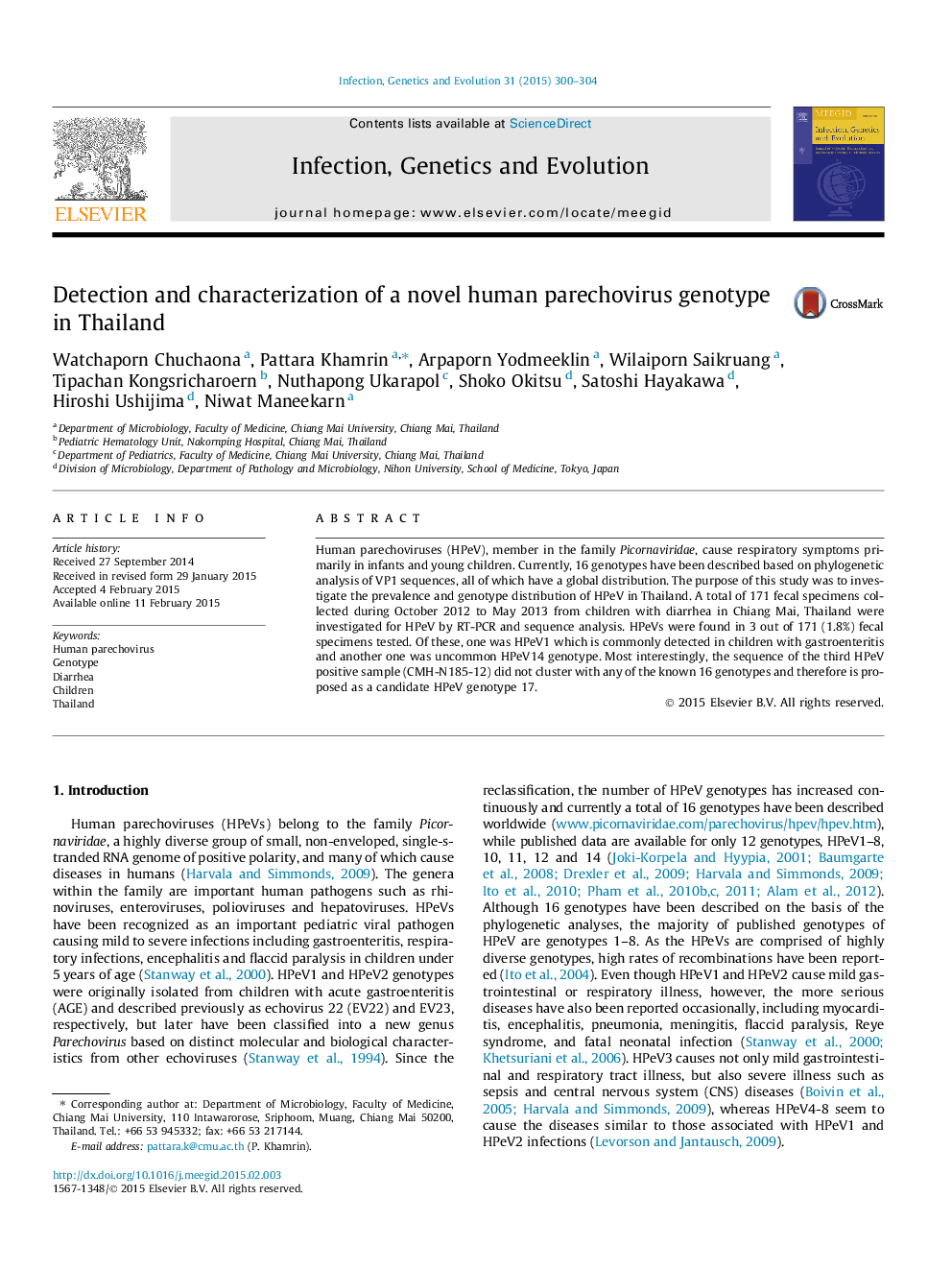| Article ID | Journal | Published Year | Pages | File Type |
|---|---|---|---|---|
| 2823032 | Infection, Genetics and Evolution | 2015 | 5 Pages |
•HPeVs were found in 3 out of 171 (1.8%) fecal specimens tested.•One was identified as HPeV1 and other one was uncommon HPeV14, while another one HPeV strain its genotype could not be assigned.•Based on nucleotide sequence analysis, the unassigned HPeV strain contained genetic background different from known HPeV genotypes and is proposed as a new genotype, HPeV17.
Human parechoviruses (HPeV), member in the family Picornaviridae, cause respiratory symptoms primarily in infants and young children. Currently, 16 genotypes have been described based on phylogenetic analysis of VP1 sequences, all of which have a global distribution. The purpose of this study was to investigate the prevalence and genotype distribution of HPeV in Thailand. A total of 171 fecal specimens collected during October 2012 to May 2013 from children with diarrhea in Chiang Mai, Thailand were investigated for HPeV by RT-PCR and sequence analysis. HPeVs were found in 3 out of 171 (1.8%) fecal specimens tested. Of these, one was HPeV1 which is commonly detected in children with gastroenteritis and another one was uncommon HPeV14 genotype. Most interestingly, the sequence of the third HPeV positive sample (CMH-N185-12) did not cluster with any of the known 16 genotypes and therefore is proposed as a candidate HPeV genotype 17.
